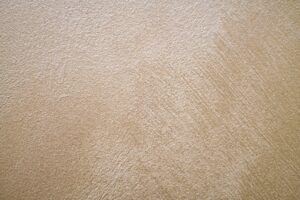
Venetian Plaster, a grandeur reflection of the luxury and charm of yesteryear’s Italian architecture, creates a vibrant, tactile, and fascinating visual sensation. However, like all things, Venetian plaster, a composition of slaked lime and marble dust, can succumb to the ravages of time, necessitating restoration. This blog post dives into the enigmatic world of Venetian plaster restoration, illuminating techniques, materials, and best practices to reclaim its original radiance.
Background on Venetian Plaster
Venetian plaster application is an art form that takes skill and patience. Layers of thin plaster are applied using a steel trowel until smooth, high-sheen finishes are created, or rustic textures can be achieved depending on the number of layers applied or burnished. When dry, this rock-hard substance becomes part of the wall and cannot be easily removed without damaging surrounding elements.
The Process of Venetian Plaster Application
Before diving into restoration, it’s crucial to understand the original application process. Venetian plaster application is an art form requiring skill and patience. Layers of thin plaster are applied using a steel trowel, creating a smooth, high-sheen finish or a rustic, textured appearance, depending on the number of layers and burnishing. The plaster dries and hardens into a rock-like substance, becoming part of the wall.
Indications that Venetian Plaster Requires Restoration
Though resilient, Venetian plaster isn’t immune to damage. Signs indicating a need for restoration include visible cracks, chipped or peeling plaster, water stains, and discoloration. Additionally, repair may be warranted if the wall has lost its characteristic luster and feels rough to the touch. Early damage identification can simplify restoration, preserving the plaster’s authenticity.
SeeAlso:
- Painting Over Venetian Plaster: A Step-by-Step Guide
- why you should hire a Local Plaster Repair Service
Materials Needed for Venetian Plaster Restoration
Restoration requires specific tools and materials. They include Venetian plaster restoration (matching the existing texture and color), a stainless steel trowel and hawk, a sanding block, 120-grit sandpaper, a paintbrush, and sealant. Sourcing suitable materials and tools is half the battle won, leading to a more prosperous and efficient restoration process.

Steps in Venetian Plaster Restoration
- Assessment: A thorough evaluation is essential to understand the extent of the damage and the right course of action.
- Cleaning: Clean the damaged area using mild detergent and water. This removes any dirt or grease interfering with the new plaster application.
- Preparation: Lightly sand down the damaged area with 120-grit sandpaper to smooth out rough edges and remove loose plaster. This creates a receptive surface for the new application.
- Application: the first Layer of plaster using a steel trowel in a criss-cross pattern, filling any holes or cracks. Let it dry for 24 hours.
- Second Layer: the second Layer. Let it dry, and then burnish it for the desired finish. Always remember to mimic the existing texture and sheen to maintain uniformity.
- Sealing: After ensuring the plaster is completely dry, apply a sealant. This enhances the plaster’s durability and protects it against future damage.
Related Post: The Best Plaster Repair Service in Miami
Common Challenges in Restoration and How to Overcome
Restoration, particularly of historical buildings, presents unique obstacles. These can include matching the plaster’s existing texture, color, and sheen, dealing with extensive water damage, and upholding architectural integrity. Surmounting such challenges requires patience, meticulous planning, and sometimes professional restoration services for guidance.
Conclusion:
Venetian plaster restoration can transport you back to Renaissance-era Italy and introduce you to its timeless beauty and enduring quality. By applying patience, dedication, and suitable materials, you can restore the original grandeur in your space and breathe new life into worn-out Venetian plaster surfaces. Restoring these pieces won’t erase their stories but honor and preserve them for future generations to appreciate.